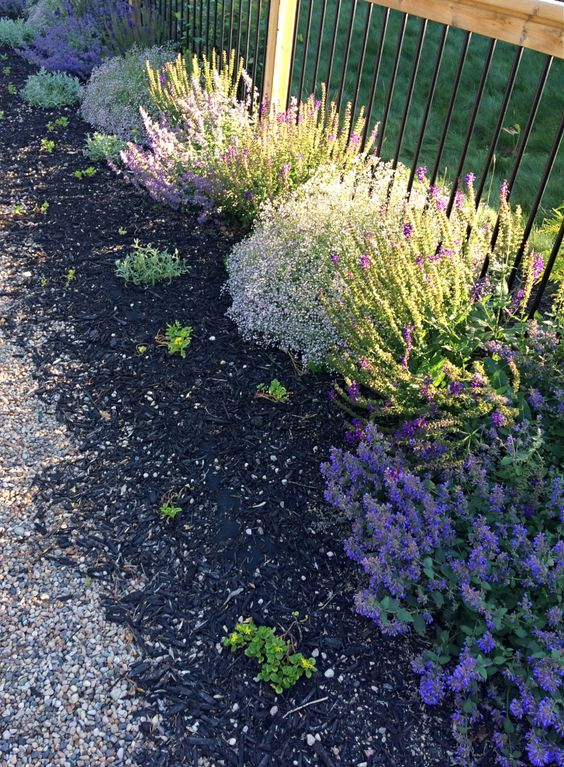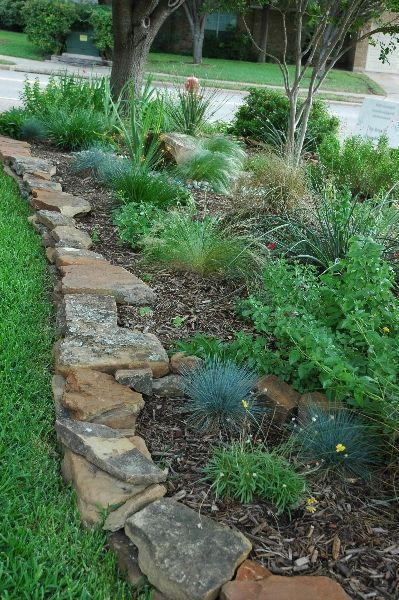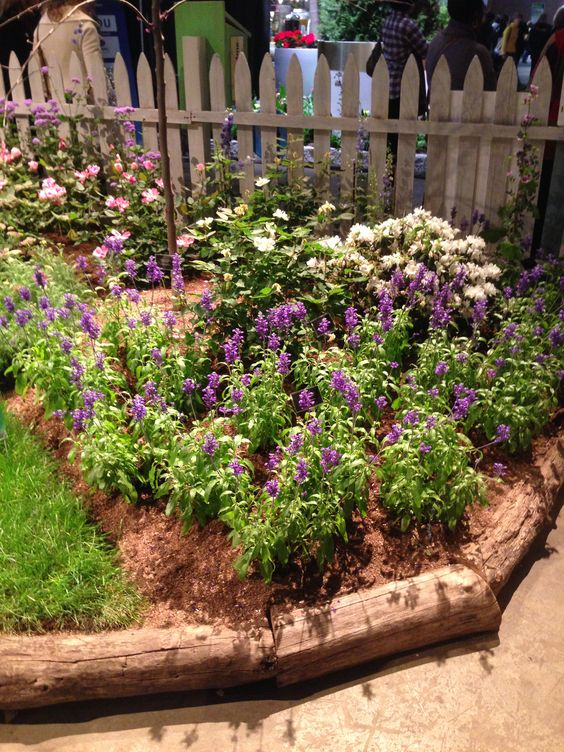What should I border my flower bed with? When it comes to enhancing the overall appearance and defining boundaries, you have several options to choose from.
One popular choice is using decorative edging materials such as stones, bricks, or pavers. These provide a clean and structured look while keeping the soil and mulch contained.
Another option is using low-growing plants or groundcovers as a natural border. They can create a soft and seamless transition between the flower bed and the surrounding landscape.
Additionally, you can consider using ornamental grasses or hedges to create a more formal and structured border.
Ultimately, the choice of what to border your flower bed with depends on your personal preference, the style of your garden, and the desired level of maintenance.
A flower bed is not just a collection of beautiful blooms but also an opportunity to create a visually stunning and well-defined space in your garden.
One crucial aspect of designing a flower bed is choosing the right border to frame and accentuate the plants.
The border serves as a boundary, enhancing the overall aesthetic appeal while providing a sense of structure and organization.
In this outline, we will explore various options for bordering flower beds and help you make an informed decision based on climate, personal taste, and maintenance requirements.
By considering these factors, you can select a border that complements your garden’s style and withstands the test of time.
Factors to Consider – What Should I Border My Flower Bed With?
Before selecting a border for your flower bed, it is essential to consider several factors.
These factors will help you choose a border material that enhances the visual appeal of your flower bed and suits your specific requirements. Here are some key factors to consider:
1. Climate and Weather Conditions

Image Credit: pinterest.com
Different regions experience varying climates and weather patterns. Consider the specific climate in your area, including temperature ranges, rainfall, and wind conditions.
Certain border materials may be more suitable for particular climates. For example, materials that can withstand extreme heat or frost are preferable in areas with harsh weather conditions.
You May Also Be Interested in:
- How Do You Arrange a Flower Bed for Landscaping?
- Should Flower Bed Be Higher Than Lawn?
- What Can I Put in My Flower Bed in Front of My House?
2. Aesthetic Preferences – What Should I Border My Flower Bed With?

Image Credit: pinterest.com
Determine the overall style and theme you want to achieve for your flower bed. Do you prefer a formal, structured look or a more natural and whimsical vibe?
Consider the colors, textures, and shapes that will complement your flower choices and the overall design of your garden. The border should enhance the beauty of the flowers without overpowering them.
3. Maintenance Requirements

Image Credit: pinterest.com
Evaluate the level of maintenance you are willing to invest in maintaining the border. Some materials require more upkeep, such as regular cleaning, sealing, or pruning.
Assess your available time, resources, and budget for maintaining the border. This will help you choose a border material that aligns with your maintenance capabilities.
Border Material Options – What Should I Border My Flower Bed With?
When it comes to bordering your flower bed, there are various materials to choose from, each offering unique characteristics and aesthetic appeal.
Consider the following options when selecting a border material.
1. Plants or Living Elements

Image Credit: pinterest.com
Low-growing hedges, ornamental grasses, or flowering plants can create a soft and organic border. They seamlessly integrate with the surrounding landscape and provide a natural and ever-changing boundary.
2. Bricks

Image Credit: pinterest.com
Brick borders provide a classic and timeless look. They are durable, versatile and come in various sizes, shapes, and colors.
Bricks can be laid in different patterns, such as herringbone or basket weave, allowing customization.
3. Stones

Image Credit: pinterest.com
Natural stones like flagstone or river rocks create a rustic and charming border. They can be stacked or laid individually, offering a variety of design possibilities.
Stones add texture and a touch of natural beauty to your flower bed.
4. Pavers

Image Credit: pinterest.com
Concrete or stone pavers offer a clean and structured border. They are available in different shapes, sizes, and colors, allowing creative combinations.
Pavers are easy to install and provide a defined edge for your flower bed.
5. Garden Sculptures

Image Credit: pinterest.com
Placing artistic sculptures along the border can add a unique and eye-catching element. Choose sculptures that complement the style and theme of your flower bed.
6. Rocks or Boulders

Image Credit: pinterest.com
Large rocks or boulders strategically placed along the border can create a dramatic and natural look. They add texture and visual interest and can serve as seating options or focal points in your garden.
7. Logs or Wooden Elements

Image Credit: pinterest.com
Using logs or reclaimed wood can bring a rustic and charming touch to your flower bed. They can be arranged vertically or horizontally to create a natural border that blends seamlessly with the surroundings.
8. Metal Edging

Image Credit: pinterest.com
Metal borders, such as aluminum or steel, offer a sleek and modern appearance. They provide a clean and crisp edge that helps prevent the spread of grass or weeds into the flower bed.
9. Plastic Edging

Image Credit: pinterest.com
Plastic borders are affordable, easy to install, and available in various styles. They provide a clear separation between the flower bed and the surrounding lawn, making maintenance and mowing more convenient.
Conclusion
What should I border my flower bed with? Selecting the right border is vital in creating a visually appealing and well-defined garden space.
You can make an informed decision that suits your specific needs by considering factors such as climate, aesthetic preferences, and maintenance requirements.
Natural materials like plants, hedges, and ornamental grasses offer an eco-friendly, ever-changing border option, seamlessly blending with the surrounding landscape.
Edging materials such as bricks, stones, and pavers provide durability, versatility, and various design possibilities.
Decorative elements like garden sculptures, rocks, or logs add unique visual interest and charm. Functional borders like metal or plastic edging offer practicality and easy maintenance.
